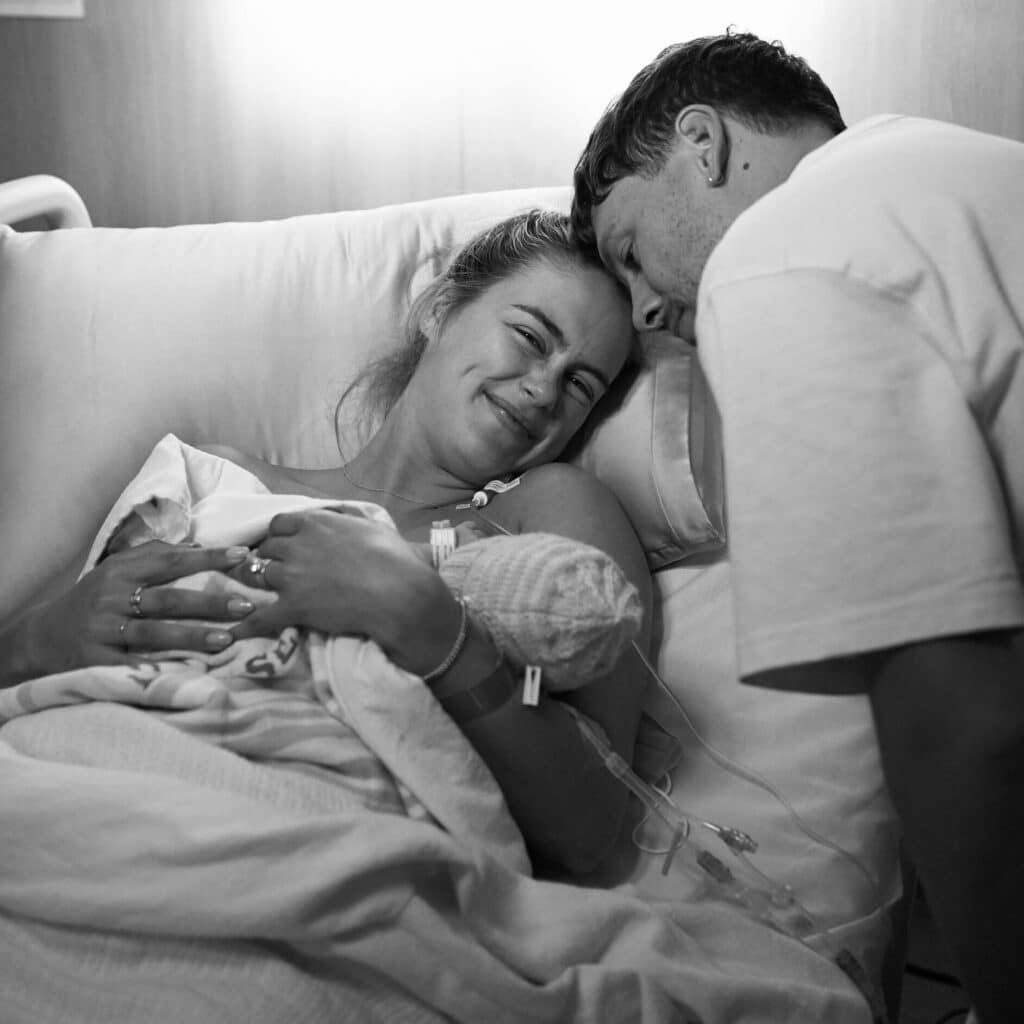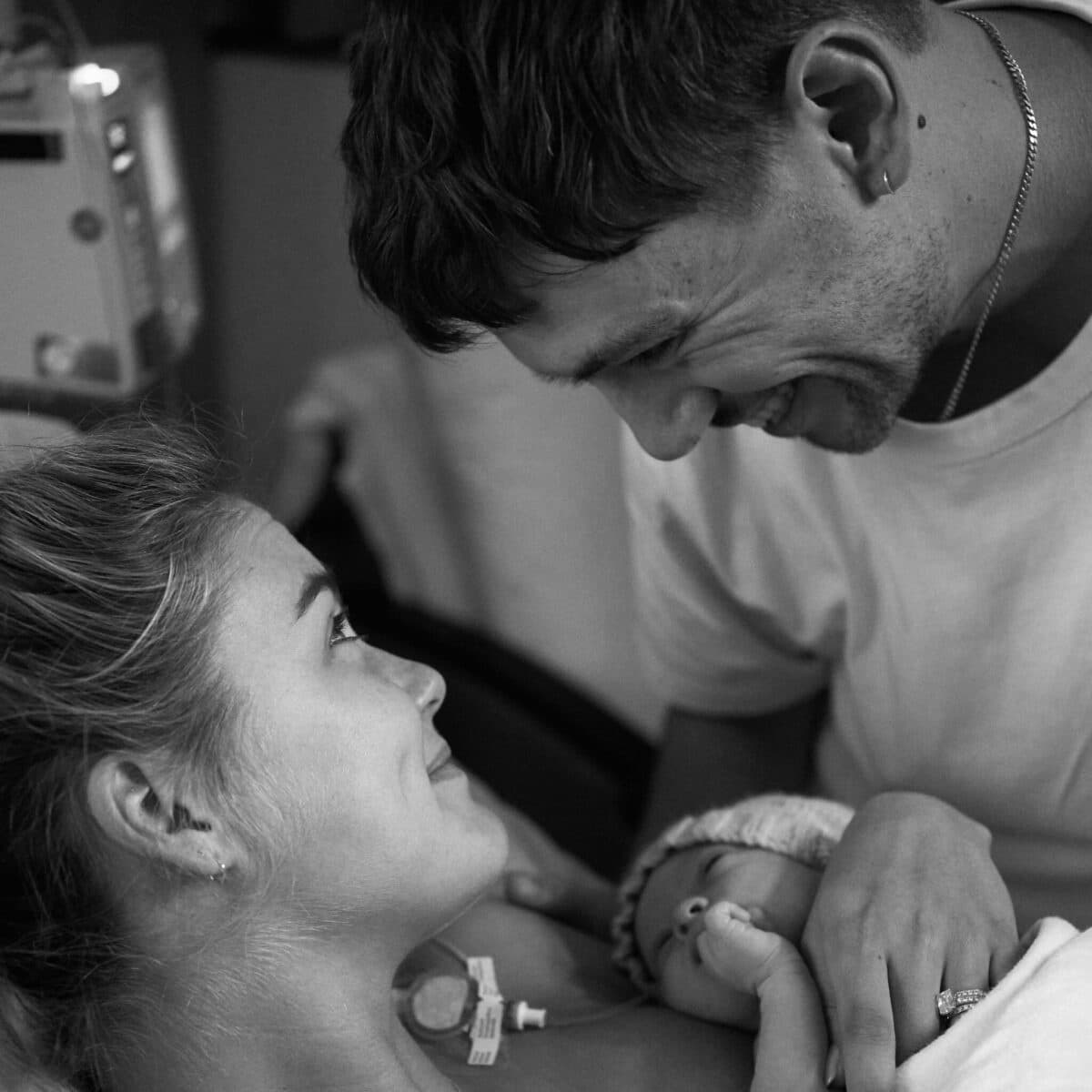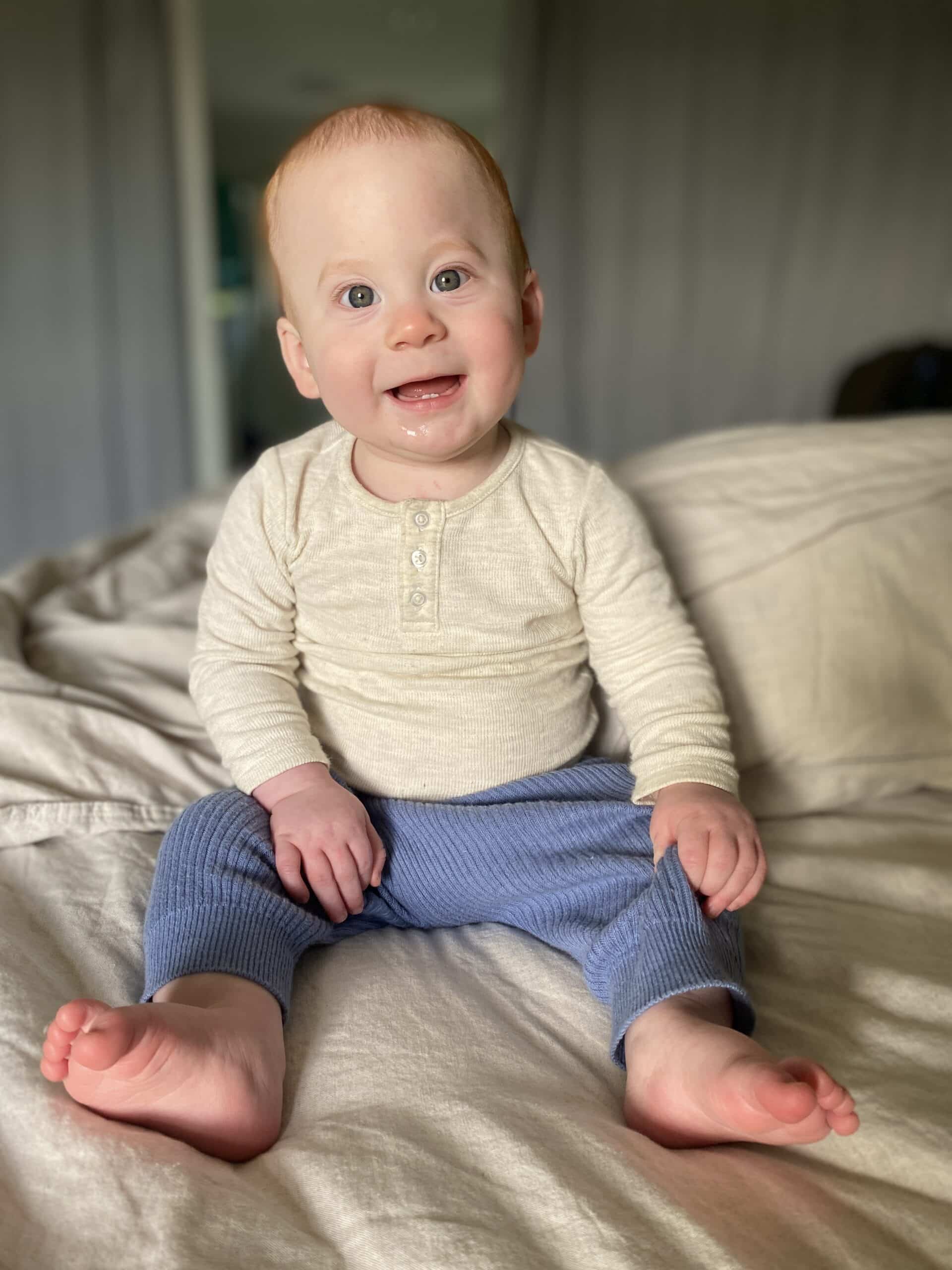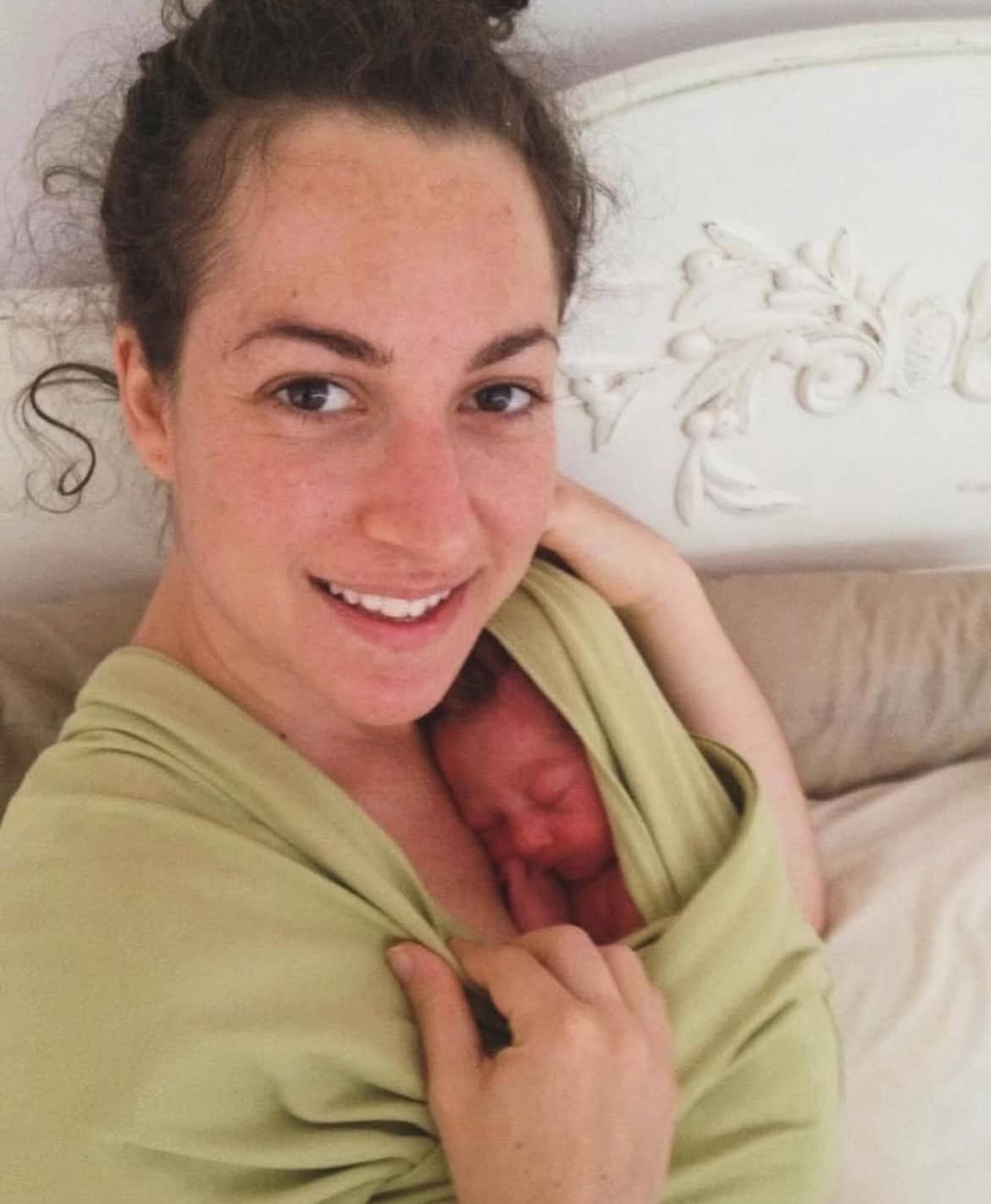Podcasts Steph Claire Smith
EPISODE 235
Steph Claire Smith

Steph and her husband, Josh, were married in late 2019 and planned to fall pregnant on their Italian honeymoon in 2020. Unsurprisingly, Covid hijacked their holiday but they went ahead with their conception plans and, despite having PCOS, she fell pregnant easily. Steph has a busy work schedule so was incredibly grateful to be able to rest and nap between zoom calls since she was housebound in lockdown.
A conversation with a friend when she was eight weeks pregnant prompted her to think about her care options and after reading glowing reviews online, she opted for private obstetric care with Dr Amanda Ward.
“I really liked the sound of her but as soon as I met her I knew she was the kind of woman I wanted in my birth space. I fell in love with her! Unfortunately we hadn’t had private health care for the twelve month waiting period so we weren’t covered. All up my care and hospital stay came to roughly $10,000.”
Steph’s work as a model and entrepreneur is based on health, fitness and wellbeing so as she ventured further into her pregnancy, she found the physical limitations to be quite challenging. However, she adjusted easily and embraced a slower, gentler approach to exercise.
“When it came to my birth plan, I wasn’t too phased. My priority was that the baby and I were safe and healthy and I didn’t mind how he arrived earthside. My preference was not to have an epidural because when I’m in pain, I like to be quite mobile, and that’s how I had envisioned my birth; I’d be in and out of the shower and using hot water as pain relief.
“A friend of ours is a midwife and she came to our house one day and went over everything – stages of labour and pain relief options – and I felt so much more comfortable afterwards. But towards the end of my pregnancy I was receiving so many messages from people suggesting natural induction methods and it just really had me doubting my own ability to go into labour. I just think that it’s all well and good to share natural remedies with your friends but watch your language around it; especially if something definitely works for someone and all the female members of their family and when it doesn’t work for you, you start wondering why and if there’s something wrong.”
At 40 weeks Steph had a stretch and sweep and her obstetrician observed that her cervix was still long and closed. They spoke about the possibility of induction and Steph was reminded that she was in charge; it was her body, her birth and if she wanted to go ahead with an induction she would be supported.
“I was down and quite lost – and so I was more than ready for labour to happen. We agreed that 41 weeks was the exit date if he hadn’t decided to come earlier.
“I went in on Sunday evening and had cervidil but that did nothing for me overnight; I was only 1cm so my OB broke my waters and Josh and I ended up having quite a laugh which just made me gush even more. Mild contractions started then – about four every ten minutes – but then they slowed and faded so at 10am the syntocin drip started and I went into active labour. I was swaying, walking around and I loved the shower…but the monitor that was stuck to my belly, the reading would drop out whenever I went into the bathroom…so they advised me to stay on or near the bed. That shattered me because I was really getting through the contractions while I was in the shower. Even the midwife could see how much more consistent my contractions were when I was in the shower.
“I was starting to struggle by 6cm – I was still only 2-3cm and I knew what that meant. That’s when my obstetrician suggested the epidural and I was so exhausted – I wasn’t breathing through contractions and my body was tensing – I was disappointed that I was having an epidural but I knew it was the best option.
“The process of getting an epidural when I was having 4-5 contractions in ten minutes was so painful but then once it was in I was just so relieved. Unfortunately my blood pressure dropped quite dramatically and it did affect Harvey’s heart rate but it ended up being fine.
“By 8pm I was 5-6cm and I got the shakes – from adrenaline – and they went for a few hours which was really challenging. At 12:30am the midwife told me I was fully dilated and she could see Harvey’s head and it was so exciting but I still had the shakes and felt sick but the adrenalin really kicked in when my doctor arrived and it ended up being my favourite part of the labour. I was laughing through it. I could feel everything; I could feel the pressure and stretching, I just couldn’t feel the pain. I got to reach down and feel his head before the final push which really motivated me. He was born at 1:21am and it was amazing!
“It was really cool to see the placenta; it was incredible. Ever since being pregnant and learning more about the female body, it’s just so fascinating that along with growing a baby, our bodies create an extra organ.”
Harvey fed for close to two hours post-birth and Steph admits that when he latched it felt amazing. She had been antenatally expressing in the final weeks of pregnancy which she believes helped her supply and allowed her to get used to feeding.
Despite feeling wonderful and healing well, Steph is focussed on resting and gently moving before launching back into pre-pregnancy exercise. She recently launched a post-natal pelvic floor program through her new app keepitcleaner.com.au but is still keeping Harvey her priority and spending lots of time on the couch, feeding, cuddling and watching Gossip Girl.
“I’m really embracing this time because everyone has told me how fleeting it is.”



Topics Discussed
Antenatal expressing, Induction, PCOS, Private obstetrician, Vaginal birth
Episode Sponsor
Today’s episode is brought to you by The Birth Class. After listening to hundreds of birth stories, pregnancy and birth experiences over the years (and birthing my own three beautiful boys) I have created my dream online childbirth education course. The Birth Class. Inside The Birth Class you will enjoy 9 incredibly insightful audio interviews with some of Australia’s favourite midwives, doulas, childbirth educators and yoga teachers Together we unpack: every aspect of birth, including the stages of labour, the role of the bodies naturally occurring hormones in birth, how to prepare your body during pregnancy for birth through optimal maternal positioning and how to harness your breath and sound and use active birthing techniques, how to prepare for a VBAC, What to expect in a Caesarean and lots more.
The Birth Class also includes an 80 page colour illustrated workbook with transcripts of the audio interviews and a hospital bag checklist, birth preferences checklist for you to print and customise. In order to ensure you have mastered the breathing and relaxation techniques we discuss in the course, I have also included a 25minute Yoga Nidra meditation and a 5 minute breathing exercise you can practice throughout your pregnancy.
Categories
Related Products
-
The Birth Class
108 reviews$249.00The empowering online childbirth education program that will help you confidently prepare for birth.
Join the conversation
Sign up to get the latest updates, freebies, podcast releases straight into your inbox
@AustralianBirthStories
Follow along with us
@AustralianBirthStories
Follow along with us
@AustralianBirthStories
Follow along with us
@AustralianBirthStories
Follow along with us
@AustralianBirthStories
Follow along with us
@AustralianBirthStories
Follow along with us
@AustralianBirthStories
Follow along with us
@AustralianBirthStories
Follow along with us
@AustralianBirthStories
Follow along with us
@AustralianBirthStories
Follow along with us
@AustralianBirthStories
Follow along with us
@AustralianBirthStories
Follow along with us






